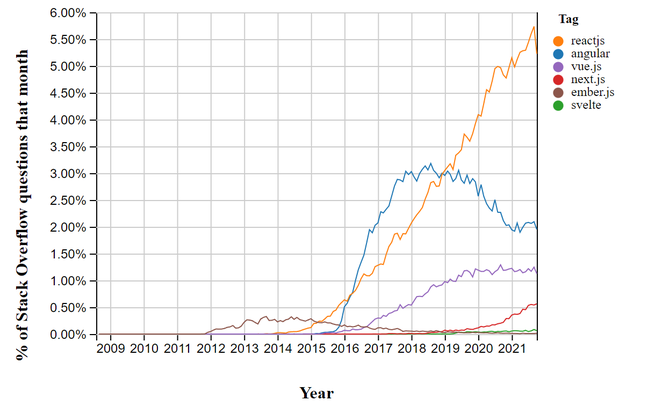This article is more than 1 year old
Angular 13 arrives: Ivy everywhere, View Engine and IE11 support cut
Cruft removed to improve performance
Version 13 of the Google-sponsored Angular JavaScript framework is here and the old View Engine renderer is gone, as is IE11 support, making Angular faster and smaller.
The latest release is as notable for what has been cut out as for what is included. Google developer relations engineer Mark Thompson said the deprecated View Engine, the old Angular compilation and rendering engine, is no longer available. According to Thompson, this means "teams can look forward to faster compilation because metadata and summary files are no longer included."
The current rendering engine, called Ivy, is now used everywhere and is being further improved and optimized. This allowed the modernization of the Angular Package Format (APF) and less use of the compatibility compiler ngcc, as well as simplification of the component API, resulting in more concise code.
The Angular team has now dropped support for Microsoft's IE11, the deprecated version of the web browser. "Removing IE11 support allows Angular to leverage modern browser features such as CSS variables and web animations via native web APIs," said Thompson.
There is also benefit in eliminating "IE specific polyfills and code paths." Developers with existing applications can run an update command that will automatically remove these, reducing the size of the bundled application.
Another change is the use of a persistent build cached by default, with build speed improved by up to 68 per cent, according to Thompson. Other improvements include an upgrade for RxJS (Reactive Extensions Library for JavaScript) to version 7.4 from version 6, which among other things means a 50 per cent reduction in library size, and support for TypeScript 4.4. Support for inline fonts has been extended to include Adobe as well as Google fonts.
Accessibility is improved in the new version, with what Thompson called "meaningful improvements" and changes to Angular Material components. A separate post last week digs into this in detail, with changes including touch target sizes, better ARIA (Accessible Rich Internet Applications) labels, improved high contrast mode, auto focus options, and a better screen reader experience.
A lot of work has been done here which should make Angular 13 substantially more accessible, though individual developers also have work to do in order to take advantage.
The crew has also revamped testing, with the native TestBed API cleaning up the DOM (Document Object Model) more thoroughly after each test. "Developers can expect faster, less memory-intensive, less interdependent, and more optimized tests," said Thompson.
According to the latest StackOverflow developer survey, React.js is the most used JavaScript framework with Angular in fourth place – or second place if one considers that jQuery and Express are less comparable. That suggests substantial usage for Angular (22.96 per cent), though it is less well liked than others such as Svelte, React.js and Vue.js (according to the "Most loved" section of the survey).
- Next.js 12: Middleware, ECMAScript modules, and lessening use of Node.js
- Chrome 'Conformance' for JavaScript frameworks says: If you don't follow our rules, your project won't build
- Open-source JavaScript project Babel 'running out of money' after employing paid maintainers, sponsors pull out
Note that Angular (which uses TypeScript) is distinct from the older Angular.js, which uses JavaScript. Angular.js has the distinction of being "Most dreaded" in the survey, whereas Angular has a respectable mid-table position.
We took Angular 13 for a brief spin with Visual Studio Code, noting that initial compilation of even a Hello World application still seems slow, but a mitigating factor is the benefit of hot module reload – so that editing the source code makes immediate and quick changes to the running application.
Despite being perhaps unfashionable, Angular is a safe choice that Google claims helps developers to follow its best practices. ®

